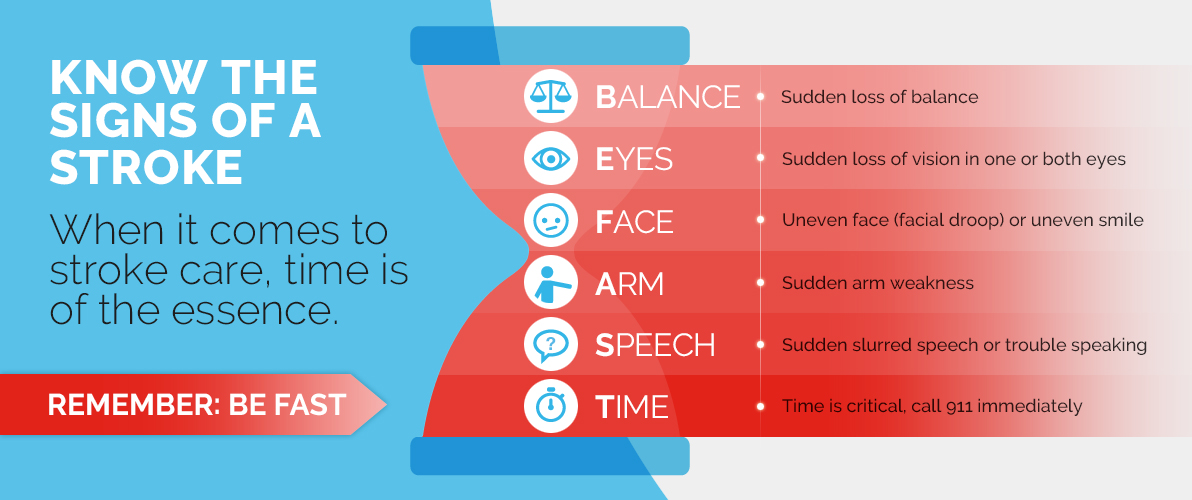Stroke and Women: Understanding Why the Risk is Higher
Women have a higher risk of stroke than men, particularly young women and Black women. Two neurologists explain why, and ways to reduce the risk.

More women than men have strokes each year, and one in five women between the ages of 55 and 75 will have a stroke in her lifetime, according to the Centers for Disease Control and Prevention. In addition, younger women and Black women have unique risks.
A recent study found that women 35 years and younger are 44% more likely to experience an ischemic stroke (a stroke caused by a blood clot) compared to men the same age, while other studies have found that Black women have triple the odds of having a stroke if they develop high blood pressure before the age of 35.
“There are several factors that can increase the risk of stroke in women, like high blood pressure and pregnancy, but these are not the only factors,” says Dr. Eliza Miller, a neurologist at NewYork-Presbyterian/Columbia University Irving Medical Center who specializes in women’s cerebrovascular health. “Certain risk factors affect women differently than men, and there are larger social factors that impact communities of color. When you add these things up, women, and especially Black women, assume a higher risk of stroke over their lifetime.”
“If you have risk factors for stroke, it is important to address and control them,” says Dr. Olajide Williams, a neurologist at NewYork-Presbyterian/Columbia University Irving Medical Center. “It is also essential to know the signs and symptoms. One of the things that we see is that if a patient arrives late to the emergency room, they could miss out on life-saving treatment. Being able to recognize when a stroke is happening to you, or your loved ones is critical.”
Health Matters spoke with Dr. Miller and Dr. Williams to understand the unique stroke risks for young women and Black women, and what people can do to reduce their risk of stroke.

Dr. Eliza Miller
Why are women more at risk for stroke than men?
Dr. Eliza Miller: One of the main reasons the risk of stroke is higher in women than in men is because women on average live longer than men, and age remains a huge risk factor for stroke. The longer you live, the more time you have to have a stroke. The higher lifetime prevalence of stroke in women has often been attributed to that fact.
In the age groups that are 45 and up, men will have a higher risk of stroke. But in the younger group, it is women who have a higher risk, especially during their reproductive years.
Why is the risk greater among younger women?
Dr. Olajide Williams: There are some risk factors that are more common in young women. For example, there are some strokes associated with pregnancy, which can nearly triple the risk of stroke in women. We see folks who are pregnant who develop complications like high blood pressure, gestational diabetes, and pre-eclampsia, which increases the risk.
Why are Black women at even greater risk of stroke?
Dr. Miller: Studies have shown that African American women have higher rates of high blood pressure, obesity, and diabetes than white women, as well as a higher risk of pregnancy-related complications. Inequities across the social and economic spectrum, called the social determinants of health, also play a role in why Black women have higher stroke risk. If someone grows up with chronic socially structured stressors, which has been linked to structural racism, it can have a physiological effect on the body that includes a higher ambulatory blood pressure.

Dr. Olajide Williams
Dr. Williams: Studies have found that Black women who develop high blood pressure before the age of 35 may have triple the risk of having a stroke, and twice the risk of having one if they are diagnosed with high blood pressure before age 45. This highlights the importance of implementing screening in communities where there might be lower access to care such as communities with a high level of under-insured or uninsured people. By meeting people where they are, we can identify these risk factors much earlier. High blood pressure tends to be silent – so many people do not have symptoms.
What else can increase the risk of stroke in women?
Dr. Miller: Hormonal contraception that contains estrogen can increase the risk of blood clotting events, and therefore increase the risk of stroke. On its own, the risk from this kind of contraception is quite low. But if there are other risk factors, such as smoking, high blood pressure or migraines with aura — meaning someone experiences migraine headaches along with flashes of light or sparkling zigzags in their vision — then taking estrogen-containing contraceptives can further elevate the risk of stroke.
Some risk factors for stroke are simply more common in women. Autoimmune conditions like lupus are more prevalent in women, and any condition that raises your level of inflammation is going to increase your risk of stroke. Women are also more likely to experience depression, which raises your risk.
Are trans women also at higher risk of stroke?
Dr. Miller: Trans women who take hormones have a higher risk of stroke compared to both cisgender women and men. But there are a lot of factors at play, not just hormone therapy. Some trans women may not be able to access hormone therapy from a doctor, they may not take the right dosage, and they may not seek care due to stigma.
If someone sees a doctor who has experience working with trans women and who can help address other stroke risk factors in addition to the hormones, there is no reason to stop hormone therapy. Transitioning from male to female is safe when you address other stroke risk factors.
What are some types of strokes? Are there ones that are more common in young women?
Dr. Williams: There are many different types of strokes but there are two major ones. There is an ischemic stroke, which is when there is a blockage or occluded the blood vessel. The blood cannot get to the area of the brain that needs it. Another common one is a hemorrhagic stroke, which is when there is bleeding in the brain because an artery burst. But the ischemic stroke is the most common – about 85% of strokes are of the ischemic type.
Young people are vulnerable to all types of strokes. We are seeing a rise in stroke among young people due to the obesity epidemic, which heads to more diabetes, more high blood pressure, less physical activity, all of which are risk factors for stroke.

What are the signs of stroke?
Dr. Williams: Think of it as the acronym BE FAST. B stands for sudden loss of balance and E is for eyes, such as having sudden visual deficits or problems seeing through one or both eyes. F stands for face, such as having facial droop, or asymmetry of your face to one side. A is arm – when your arm is weak on one side typically or you cannot elevate it, or it drops when you lift it up. You cannot keep it up for more than a couple of seconds. S is for speech. You have some type of speech disturbance that also occurs suddenly such as slurring of your words, the use of incomprehensible words, or the inability to find words. All of these signs and symptoms occur suddenly. Then T stands for time, which means that it is time to call 911.
Are there stroke prevention strategies for young women and Black women?
Dr. Miller: It is important for young women and Black women to get holistic care during their reproductive years. This includes checking and managing blood pressure, cholesterol, and discussing with their doctor other factors that can impact someone’s cardiovascular health, particularly related to contraceptives and pregnancy.
Stroke Prevention Tips
Some risk factors for stroke cannot be controlled, like age, family history, race, sex, or gender. But there are many things people can do to help prevent a stroke. These include:
Exercise. The American Heart Association recommends 150 minutes of at least moderate intensity aerobic exercise, such as riding a bike, jogging or playing tennis.
Eat Healthy. Avoid concentrated sweets, processed and salty foods, and sweetened beverages. Eat plenty of fruits and vegetables, nuts, and lean protein like fish and skinless poultry.
Prioritize Sleep. Poor sleep can raise your blood pressure and cause you to feel exhausted and hungry, which can lead to weight gain and increased risk of stroke. Talk to your doctor if you have sleep problems.
Don’t smoke. Smoking increases the risk of stroke; the risk more than doubles for African Americans who smoke compared to their nonsmoking peers.
Limit alcohol. If you drink alcohol, limit yourself to no more than one drink per day for non-pregnant women and no more than two drinks a day for men.
Eliza Miller, M.D., M.S., is a neurologist at NewYork-Presbyterian/Columbia University Irving Medical Center and an assistant professor of neurology at Columbia University Vagelos College of Physicians and Surgeons. She has a particular interest in women’s cerebrovascular health through all life stages and is an expert in cerebrovascular complications of pregnancy and the postpartum period.
Olajide A. Williams, M.D., M.S., is an attending physician specializing in the treatment of stroke and cerebrovascular diseases at NewYork-Presbyterian/Columbia University Irving Medical Center. He is also a professor of neurology, vice dean of community health, and vice chair of the Department of Neurology at the Columbia University Vagelos College of Physicians and Surgeons.
In addition to teaching courses on clinical practice and neuroscience to medical students, he is actively engaged in addressing healthcare disparities and promoting greater diversity and inclusion in academic medicine.
Dr. Williams is co-director of the Columbia Center for Community Health at the Jerome Green Science Center where he leads pioneering initiatives including the Community Health Worker Stroke Prevention program.
Additional Resources
Learn more about stroke services and Women’s Health services at NewYork-Presbyterian.
Click here for more on how NewYork-Presbyterian is addressing inequities in healthcare.

